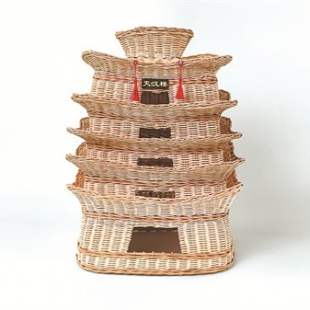Weaving the past into the present


Today, many locals have ridden on the wave of the thriving rattan-weaving business in Huangguan, where an industry model has taken shape, integrating raw material cultivation, company, cooperative, farmer and e-commerce.
For instance, cooperatives make full use of local resources, organizing farmers for production tasks, and setting up home-based workshops, notes Hu Jing, director of the Nanzheng district cultural center.
Unified standards and centralized purchasing and sales have created a production landscape, where "every household is a factory, and every home is a workshop", Hu says.
Chen believes it's equally important to preserve the traditional essence, and integrate new techniques and technologies to foster continuous innovation.
He has established an R&D team to apply traditional weaving techniques to decorative and architectural design projects.
One of his company's latest cultural innovations is a series of rattan fans that feature patterns of crested ibis, giant panda, golden snub-nosed monkey and takin, collectively known as the four treasures in the Qinling Mountains in Shaanxi.
"It has quickly become a best-seller on e-commerce platforms," says Chen.
Over the past three years, the company's annual output has exceeded 50 million yuan ($6.97 million).
He has noticed local authorities have rolled out grand plans for rattan-weaving development and craft standards that preserve the traditional essence and meet practical modern demands.
"Those initiatives will undoubtedly provide a powerful boost to the rattan-weaving industry in Hanzhong," Chen says.





































